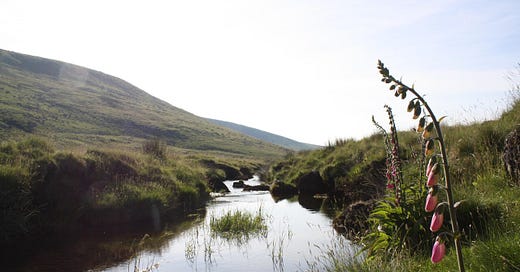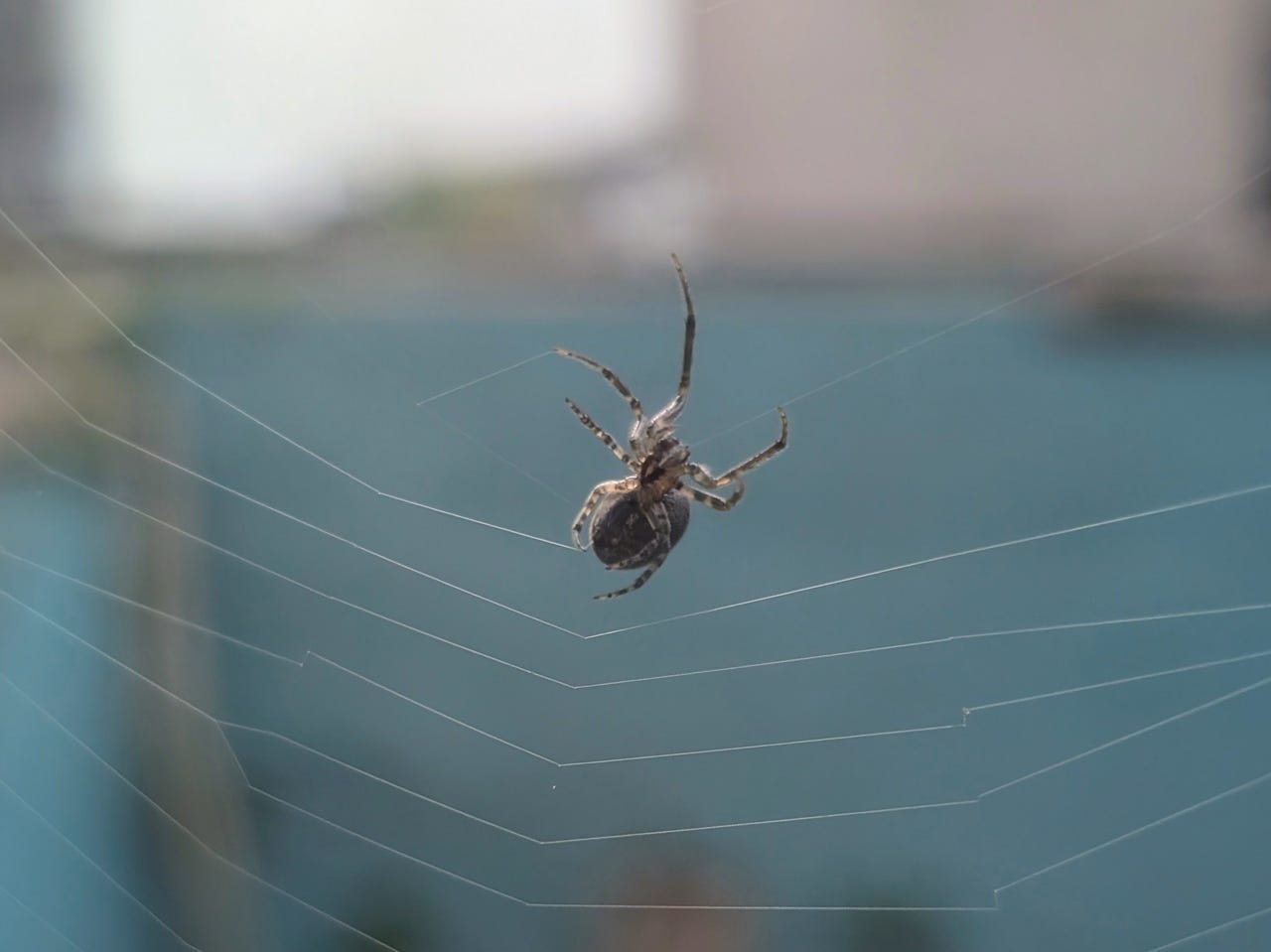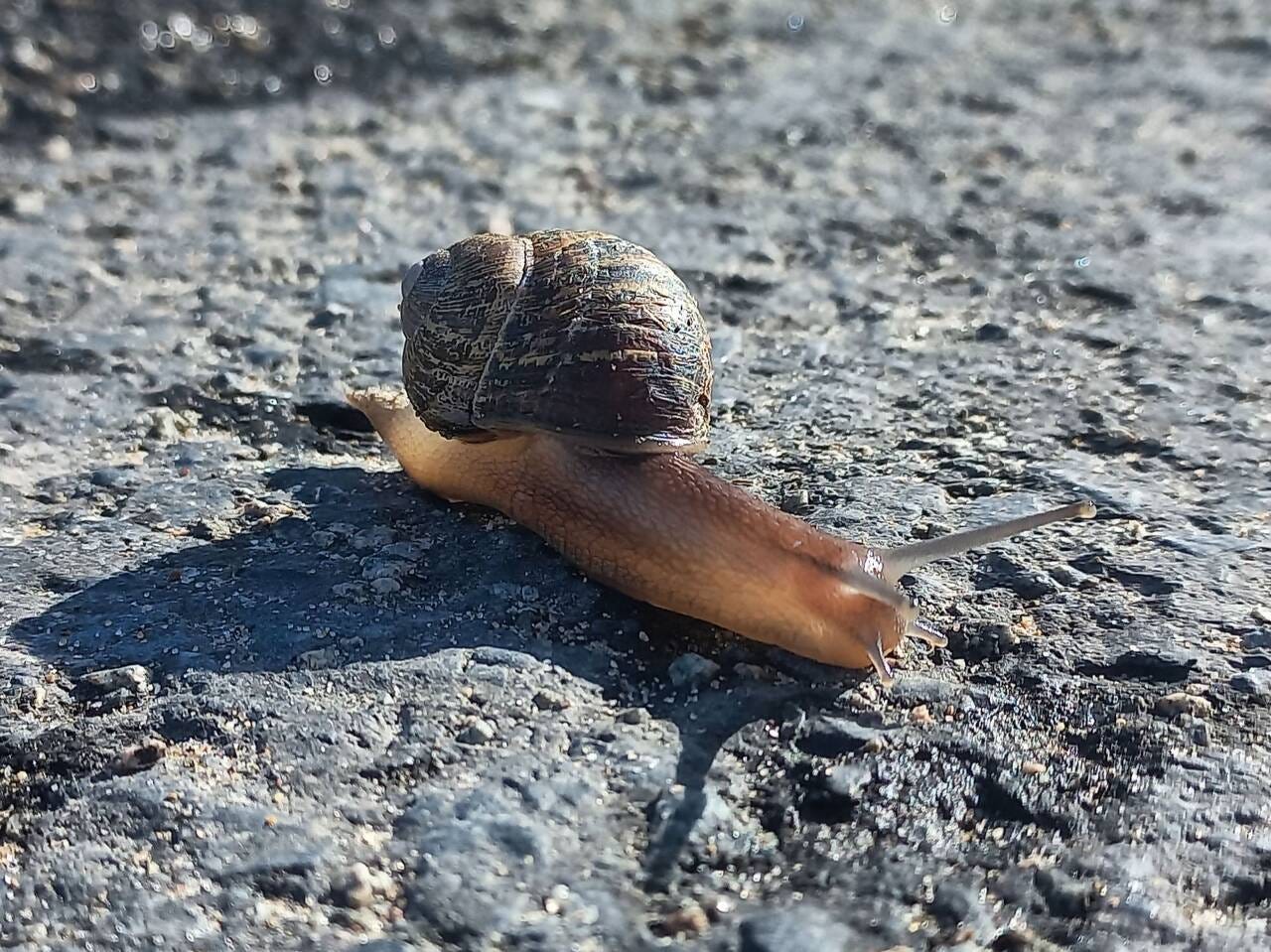If there’s one word that increasingly bothers me in writing about walking, it’s scenery. I can appreciate a beautiful view as much as anyone, and I’m fortunate to have visited some places that are breathtakingly spectacular. But the world is more than a beautiful backdrop.
The concept of scenery privileges places in nature that are aesthetically attractive. We are drawn to wide beaches, jagged mountaintops, rolling hills and ancient woodlands. We love landscape paintings that capture the sublime majesty of inspiring vistas. Our photo albums are filled with perfectly framed images lit by the amber glow of the golden hour. And all the while, we flatten nature into a two-dimensional stage for human imagination and drama.
But there is a different way of approaching the world, one that invites us into a deep, reciprocal and nurturing relationship with life. It’s a path of humility and respect, blurring the imagined boundaries of nature and culture, and helping us find our place in the family of all beings.
It starts with understanding that everything that isn’t human is more-than-human.
A conceptual primer
If you've been reading Pilgrimagic for a while, you will have noticed that I frequently use the phrase more-than-human. I first encountered it in the writing of David Abram, whose book, The Spell of the Sensuous, was inspired by his frustration with our inadequate language to describe the relationship between humans and the rest of the natural world.
At the time he wrote it, he felt “stymied by a lack of precise words and phrases by which to articulate the real relation between our species and the countless other shapes of sensitivity and sentience with whom our lives are entangled.” He struggled with the word environment. Like scenery, it flattens the complexity of vibrant interrelationships in the living world into a backdrop that is distinct from humanity. But he also resisted the word nature, feeling that it artificially separated us from other beings. Humans create culture and we spend our lives immersed in it, but we are not so different.
For another perspective, Professor Sarah Whatmore explored the idea of more-than-human geography. She wanted to understand what is left out when we consider “how the category of the human and our own social lives are actually built and made.” Her focus was on relationships, not just between humans and the living community of nature, but with those elements of the world we consider to be inanimate. She came to see landscapes as complex communities, in her words, “co-fabricated between more-than-human bodies and a lively earth.” Like any good academic, her writing is conceptually dense and not for the faint hearted.
I’ve never been able to establish whether Abram and Whatmore met or spoke to each other about their work. But theirs aren’t novel ideas. Many cultures have historically understood that humans are just another part of the world, not a uniquely privileged species in dominion over it. With our growing awareness of ecological crisis, this ancient wisdom of the more-than-human helps us place ourselves in relationship with others.
Being with an animate world
Another writer who has shaped my thinking about relationships with the living world is the French philosopher Jean-Luc Nancy. His work was rooted in the traditions of continental philosophy, which wrestled with the idea of what it was to be human. For 20th-century phenomenologists, being human was grounded in their sensory experience of the world. Existentialists envisioned human lives of freedom and action, centred on the struggle to make meaning in an absurd universe. Nancy’s être-avec - being-with - placed humanity in a community where our individual existence is inherently interconnected. He argued that we cannot be who we are except in relationship with others.
Reading books has helped reorganise my thinking about humanity’s place in the world. But my journey began intuitively, in simply being with the other inhabitants of this planet. Human thinkers have changed my mind but birch trees changed my heart.
I encountered birch at Holme Fen in Cambridgeshire at a moment of profound spiritual and mental health crisis. I had crashed out of my career, overwhelmed by workplace stress, unprocessed trauma, depression and anxiety. My relationship was crumbling under the pressure and my mind could no longer make sense of my place in the world. Underneath it all, my heart was aching for connection and my body longed for rest. In the midst of the turmoil, birch trees welcomed me home.
Birch is a pioneer species, often the first tree to establish itself in scrubland as it begins the journey towards being a forest. It grows rapidly, stabilising the ground with its spreading roots and providing shelter for slower growing trees under its shimmering canopy. Its slender white body shines in the darkness and gleams in sunlight. At Holme Fen, where birch trees extend as far as the eye can see, it draws your eye up from the soft, mossy earth to the endless arc of the sky.
My birch family
Birch is a tree of new beginnings, and not just as a pioneer. Its name in Irish - beith - is the first letter of the ogam script, an ancient writing system that is unique to these islands. Its twigs are strong and flexible, and since ancient times have been bound into brooms to sweep away the old and create space for the new. Its leaves are among the first to unfurl in the spring sunlight, and it stands at the gate of the new year.
But even beyond its ecological and mythological significance, birch is family to me. My mum died when I was young and her ashes were scattered in a rose garden at the crematorium. Among those flower beds, there now stands a birch tree. Over time, as it has drawn nutrients and minerals from the soil, I like to think it has woven her body into its own. It holds a memory of her physical form, transmuted into bark and leaves.
I wonder if the birch trees of Holme Fen welcomed me not simply because they recognised another being in need of a new beginning, but because they saw me as kin.
Every birch tree is a member of my extended family. I am part of a network of kinship that extends around the northern hemisphere, from the woodlands of Atlantic Europe to the depths of Siberia. Birch has found its way across the sea to North America too, becoming naturalised in Canada. Forests of birch are vibrant communities in which every tree plays a unique role. My birch family is uncountably vast and it recognises me as its own.
Relationships of equality
My life is not special. Or at least, it is no more special than the life of every other being. My body is made of earth and stardust. Like everything else that is born, grows and dies, I am only briefly not soil.
Dismantling human privilege recasts us in a position of radical equality. And it bestows the gift of seeing the beings of the more-than-human community as greater than ourselves. Our ingenuity may have created music, but we can barely grasp the song of thrush or whale. We believe in the triumph of our strength, yet spider can produce weight bearing threads from her own body. We have adapted ourselves to countless environments, but wind and water will always find a way into our homes.
And, along with every being, I believe we share the gift of mindedness. Every member of the more-than-human community senses the world around it and is capable of action in response. The world is humming with the undeniable essence of spirited life. And perhaps that agency extends beyond the beings we see as living. Gravity, rainfall and erosion may direct the path of a river, but what of its desire to reach the sea? What if every path we walk has its own intention, and invites us as humans to collaborate in its making?
Recognising the reality of equality has profound ethical implications. For some, it means a turn towards non-violence and conscious consumption. Others embrace the sacred hunt as an expression of humanity’s role as an apex predator. But ultimately, whatever decisions we make about the places we inhabit, the resources that sustain us and the impact we have, we can start from a place of interdependent respect and deep gratitude. As Graham Harvey puts it in An Animist Manifesto:
All that exists lives
All that lives is worthy of respect
You don’t have to like what you respectNot liking someone is no reason for not respecting them
Respecting someone is no reason for not eating them
Meeting the more-than-human
Every walk is a chance to encounter the more-than-human. If we are willing to cross the bridge that divides humans and scenery, we can find ourselves in a renewed relationship with life. Here are some practices:
Notice the agency of the living world. Even if you believe that nature only moves with the unminded force of instinct, imagine for a moment that this is not the whole story. How has the tree grown in response to the wind? How does the river negotiate with the land it flows through? What calls the flight of geese towards the setting sun? You can approach every place you walk as a complex community co-created with a lively earth.
Find the wonders where you are. Give the photogenic hotspots space to breathe and recover. Remember that even in the heart of a human city, the sky reaches down to touch the earth. You are never far from the sun, wind or rain. Our buildings are the product of mountains and mines. Living beings insistently push their way through concrete, wind around steel and smash through glass.
Engage your senses. Like everything that exists, your senses connect you with the world. We humans privilege sight, but we have so many ways to experience our immersion. As the scents of the world reach us, we breathe them in. The foods we eat become our bodies. Everything we brush again touches us back. So, notice what is alluring and sensuous. Let the living world woo you with its colours, aromas and tastes.
Follow more-than-human paths. On a rocky hillside, the answer to the question “Is it a path or a stream?” is often “Yes!” As you walk, notice how the paths you follow are made not just by human desires, but in response to the needs of the land and other beings that move through it. Let the tracks of deer beckon you. Follow the magpie.
Find your living kin. There is a way of connection beyond the cultural appropriation of power animals and spirit guides. There is deep magic in becoming enraptured by the progress of a snail or the persistence of a dandelion. Observe another living being and how it makes its place in the world. Learn about its life, habits, needs and desires. Reflect on what it can teach you about your own.
Life has an unstoppable energy that longs to remind us of our connection. Let it find you as you walk.











This is so beautifully and articulately written! I can't remember if I've commented before but i first stumbled across your account over a leaf on the pavement - it had such good textures and really captured it's leafy nature. So much so I had to show my mum who spends more time than most housebound. I knew she would appreciate it because you captured the more than humanness of it which is what she misses from being inside often. We talked about you, "oh this, this is a person who knows the things" and I was surprised but not to read about your ND (which I can't remember the name of 🫣 because I got good memory for textures and bad for word retrieval 😂). You have had to work harder and intellectualise in areas many take for granted and it's like through that effort you can explain the world with this heightened ability and I go YEAH THAT. I have nothing clever to say 😂 but to point and go YEAH THAT. And to tell you I really appreciate pieces like this where I find out there are actual words for thoughts/feelings instead of just pointing 😁. In summary - THANK YOU.
I've just encountered your writing as it was linked to another account I follow and I was going g to skim over it but ended up reading it forwards then, bizarrely, backwards (by paragraphs).
I too have developed a love for birch, maybe because I spent 3 weeks living in a tent in a Scottish birch forest, I felt strongly as I lay down at night that they, the birch trees, were trying to embrace me and pull me towards their roots. But the reason I read your piece twice was that I've been trying to express similar thoughts, that all living things are connected as part of a whole and that the purpose of the evolutionary dead end that defines us as humans is to be the consciousness of the whole and so give it worth (worthship or worship). Anyway, I look forward to reading more of your writing, thank you for posting it.